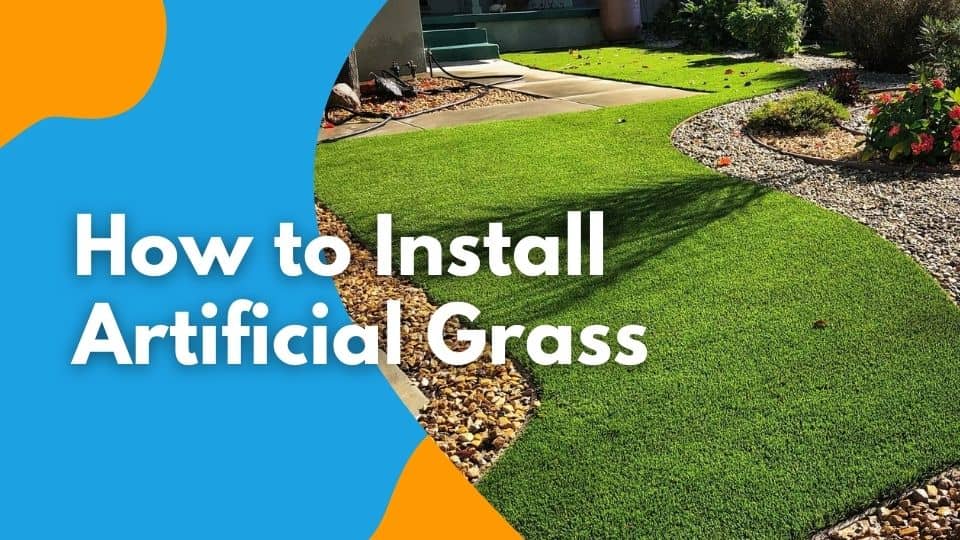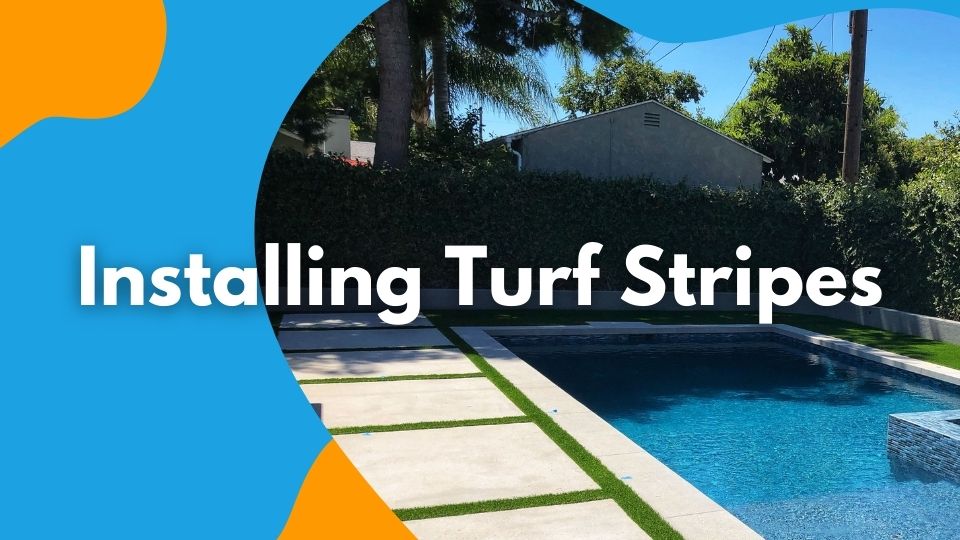
Discover how customers are enhancing their property by installing turf between pavers and concrete slabs. Learn where this works best, and decide if this is the right...
Synthetic turf between concrete slabs or pavers has become a trending home edition on driveways, patios, and backyards. Installing plush artificial grass is the perfect way to provide more balance and color within your space. How do you install fake grass strips? Keep reading to learn more!
Pavers and turf can create a beautiful and unique landscape. To install turf between hardscapes, you'll want to make sure the hardscape is in place first. If the stone or pavers are not pre-existing, lay your hardscape in the desired pattern before moving on to artificial grass installation. Laying the turf before the pavers will typically result in damage to the grass and won't produce the desired look.
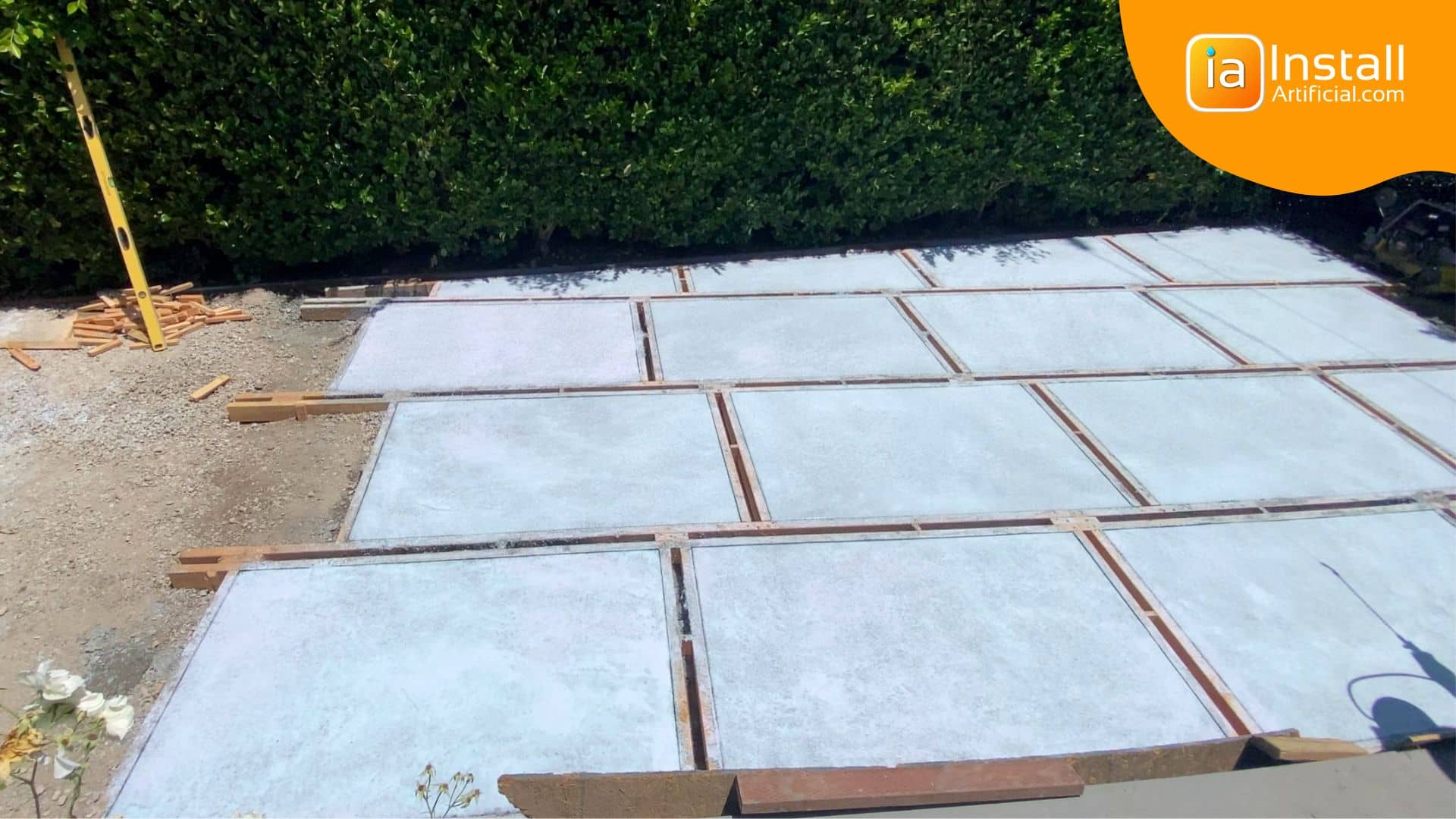
Ideally, there should be around a 3-4" gap between each paver or concrete slab for the best look. Make sure the installed hardscape is clean on the edges, with no excess concrete or stone spilling into the gaps. This will make it impossible to secure the turf with nails. Any concrete between the gaps will need to be chopped off and removed before moving forward.
You'll need about 3" of depth in the gaps between the hardscape. This will make room for 2" of base material and the artificial grass itself.
The artificial grass you choose to install between concrete pavers is completely up to you and will depend on personal preference! Choosing grass with a shorter durable blade will make the turf flush with the hardscape while opting for a plush and tall artificial grass will offer a fluffy overspill.
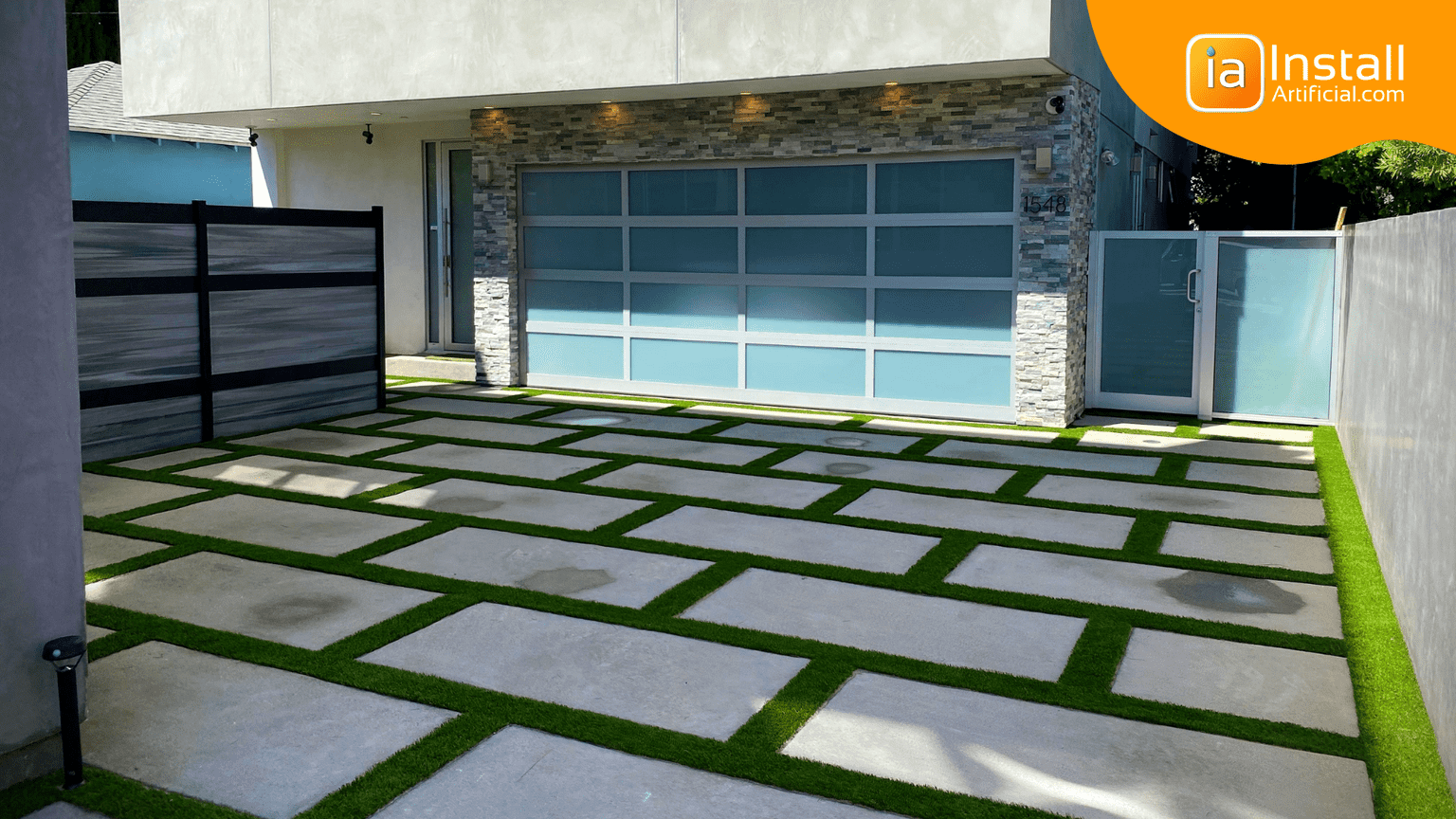
For driveways or areas where foot traffic is heavy, installing durable turf that's flush with the stone is ideal because it's more resistant to wear and tear or matting. While often in backyards we see clients opt for soft and tall artificial grass that offers a cozier hangout space for the family.
Good drainage is key to a successful artificial grass installation, and checking for proper drainage between pavers is an important first step. This will help avoid puddles and flooding down the road. You'll need to examine what type of ground material is between your pavers.
Ideally, you should only have dirt or soil, in which case you can lay a sub-base like normal. However, concrete, cement, or rock may be present instead. In this case, you must first inspect grading before proceeding. Insufficient grading will require you to either grade the concrete layer first or drill drainage holes through it.
You can double-check drainage capabilities by spraying water over the ground surface. Check for any pools or puddles that might have formed - these are locations where drainage holes should be placed.
A sub-base layer is key for proper drainage and performance, regardless of how your pavers are set (in concrete or soil). Class II road base is the best base material but is hard to get ahold of for DIY projects, so in this case, DG is recommended. Lay approximately 2" of base material in the gaps and make sure it's evenly dispersed before moving on to compaction.
It can be tough to compact the base during artificial grass strip installation because the gaps are narrow. If applicable, use a stamp compactor for the best results. However, if you don't have access to this tool you can compact the turf base manually. Place a brick or piece of wood in the gap and hit it with a heavy hammer repeatedly to compress the base.
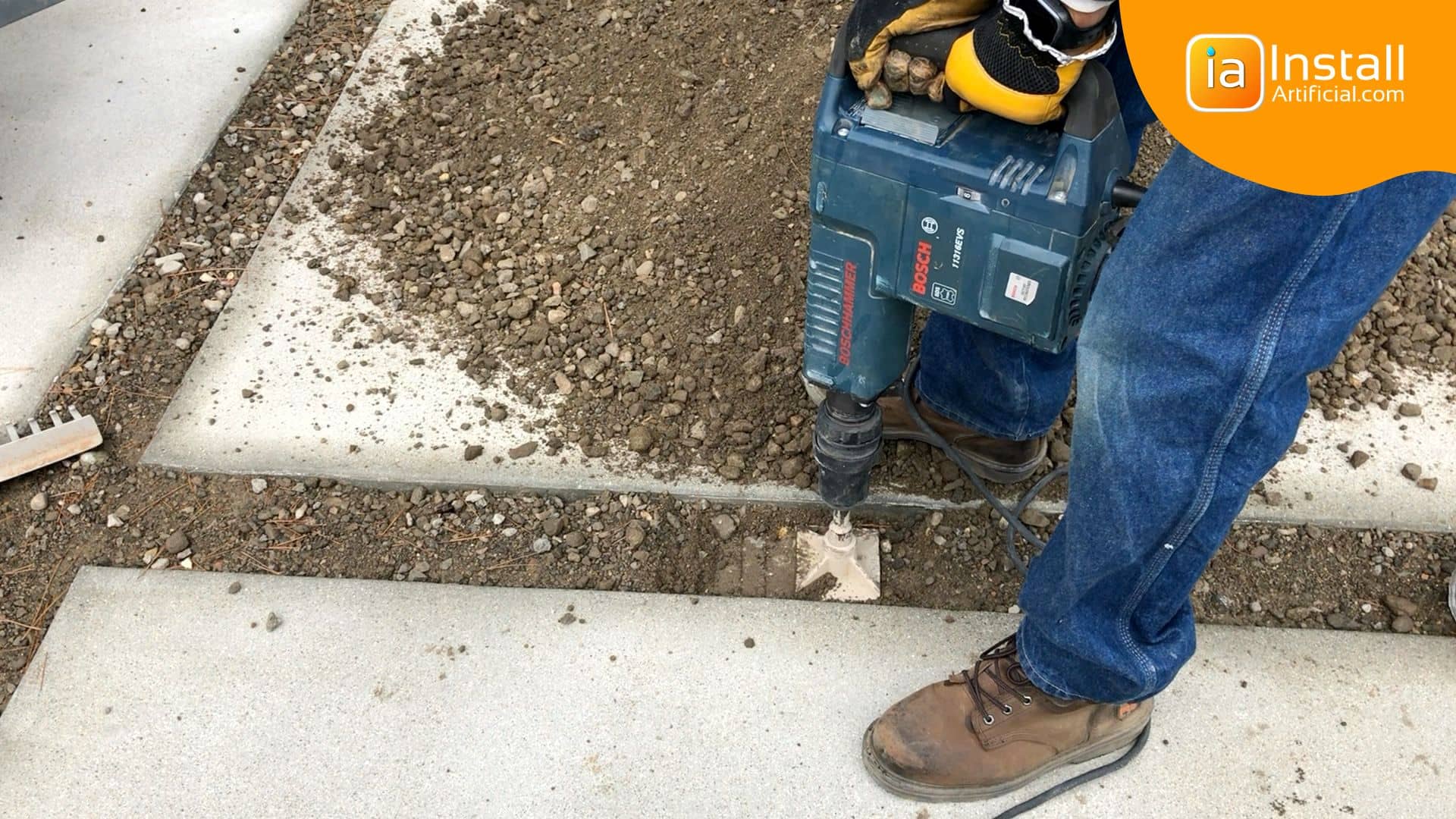
Once the base is prepped, unroll and lay the artificial grass in the sun. Allow it to rest for at least 30 minutes to make the fake grass easier to work with. When cutting the turf to the accurate shape, it's very important that you keep the strips all facing the same direction or the blades won't match and you won't produce the desired look. Typically, the most attractive viewing angle is when the blades are facing the house.
When seaming your artificial grass strips, it is important to properly connect the panels together. This will ensure a seamless and strong connection. Once the installation is complete, these joins should be undetectable. Use seaming tape and Pro Mapei glue and carefully follow the product instructions.
Now that you've cut and seamed your fake grass, it's time to bind it to the ground. Artificial turf between concrete or pavers will require a lot of nails to be fully secure. You should have a non-galvanized nail every 2" along the perimeters and every 2 ft. throughout the strips.
To fix fake grass on hard surfaces like concrete or stone, you'll need to use some adhesive. Make sure the surface is clean before applying the adhesive, and look for a type of adhesive that's made specifically for fake grass. In these circumstances, it's best to apply the adhesive sparingly so that you don't clog up the ground's drainage system.
Now that the cutting, fastening, trimming, and connecting are completed, it's time to install the infill. Artificial grass infill is fine silt that can be made of sand, rubber, or cork. It has several functions: keeping grass blades erect, cooling the lawn, ensuring proper drainage, and more. Infill is essential for artificial grass upkeep and lifespan.
Use a stiff-bristled brush or a power broom to distribute the infill and fluff up the grass fibers. Once the area is cleaned you're ready to enjoy your low-maintenance landscape update!
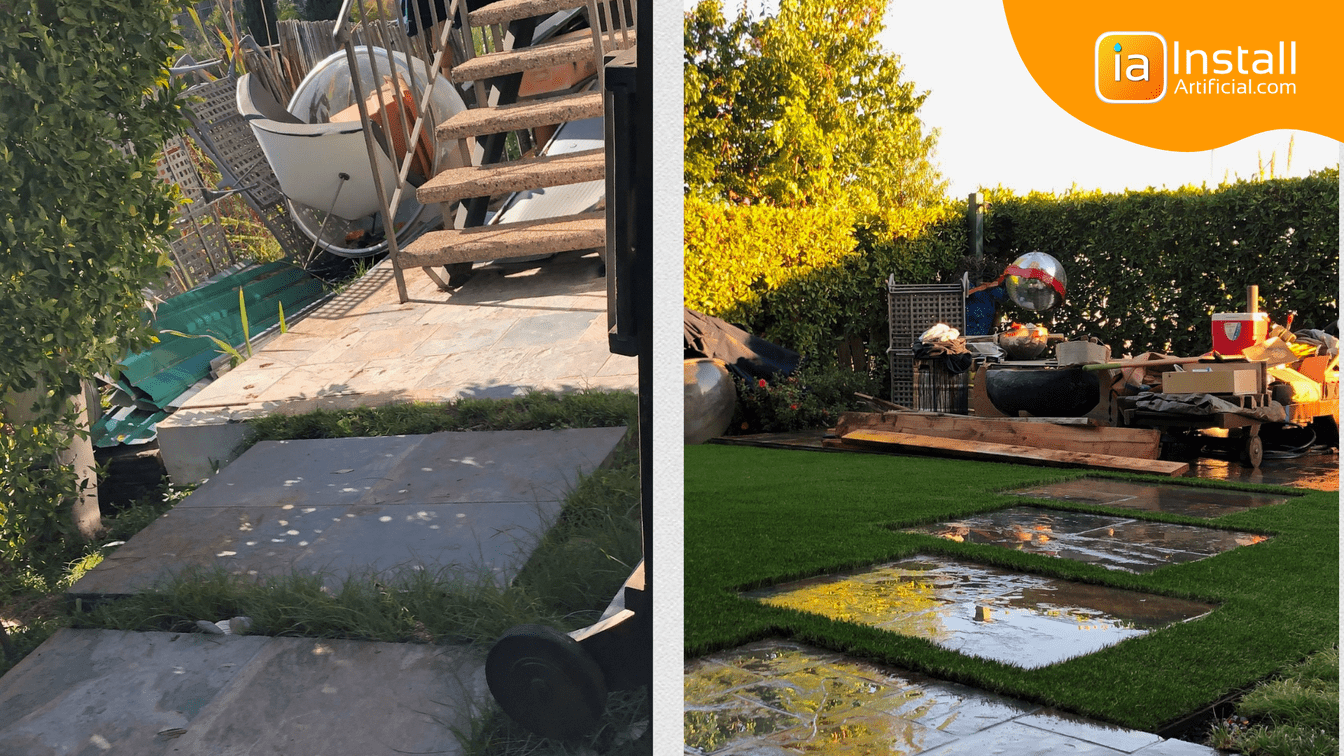
Ready to transform your space with artificial grass? Find the best artificial turf materials online on our online synthetic turf store! If after reading our step-by-step turf installation guide you'd like to leave it to the professionals, we've got you covered. Request a custom estimate below and check out our backyard renovation gallery to see more completed projects!

Discover how customers are enhancing their property by installing turf between pavers and concrete slabs. Learn where this works best, and decide if this is the right...
